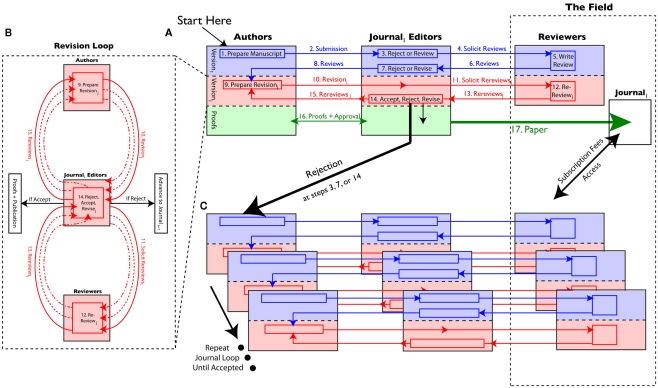Figure 1.
Diagram of the current publishing process. (A) Outline of the steps involved in the first submission of a paper to a journal. (1, 2) Authors prepare and submit the manuscript. (3) Journal editors decide whether to reject the paper or send it for review. If the decision is to review, reviews are solicited (4), written by the reviewers (5), and sent back to the editors (6). (7) Editors then decide whether to accept, reject, or allow revision and resubmission of the manuscript. In practice almost no paper is accepted in this first round of review. If the decision is to allow revision, the reviews are sent to the authors (8) and a theoretically unbounded revision loop (B) then proceeds. This loop can terminate in either acceptance or rejection. If the paper is accepted it proceeds to the proof stage, where it is exchanged between the editors and authors (16) until ready for publication in the journal (17). If the paper is rejected at any of the decision points (3, 7, 14) the authors will generally proceed to submit it to another journal, beginning a journal loop (C). (B) Details of the revision loop. In each iteration the authors prepare the revision (9), which is communicated to the reviewers by the editors (10, 11). The reviewers write re-reviews (12) that are sent back to the editors (13). (14) The editors then decide whether to accept, reject, or allow revision. If the decision is revision the loop begins again, and continues until an accept or reject decision is reached. (C) If a paper is rejected, a loop of repeated submissions to many journals begins until the paper is accepted. In practice, few papers are ever abandoned, so the loop generally continues until acceptance an publication. Each new submission has the same step as the original submission (A).

